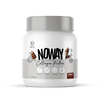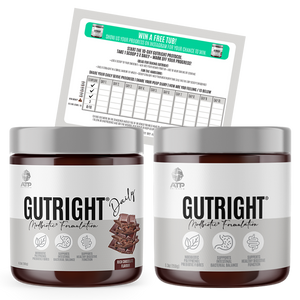Peptides – A Fundamental Insight into their Existence

Peptides are an interesting topic, most of their misunderstanding in function comes from misinformation previously that’s since stuck with them. However, breaking down the fundamentals of what peptides are and how they work in the body, we will quickly see that they are indeed incredible tools that provide a very functional purpose.
What is a peptide?
A peptide is essentially a shorter chained protein, providing a more specific function in the body than that of long-stranded proteins. For example, when we look at protein, a form of protein is created when a series of singular amino acids taken from the diet, are combined to make this protein. Looking at a peptide, we can see the lengthy stranding effects of a protein and aim to cleave the amino acid sequence of a protein at certain points. Doing so means that the end tails provide a slightly different code plug-in for a more specific desired outcome and function in the body.
Think of it like taking a large ring of keys to try and unlock a door, all of them are relevant to the doors around you so you need it, but to save time, you really just need the chain to be sorted in a way that makes the door you want to open a less strenuous process. This is where the advancements of peptides in functional practice can be and are being used, to make targeting particular components of the body requirements far easier.
The history of peptides
Peptides have a short history but a very promising future – if we take a look back to a life-saving form of medicine; insulin, back in the 1920s. This was the first development and isolation of a peptide that provided a specific function in the body; insulin is a 51 amino acid-bound peptide.[1]
The isolation of this peptide replaced the need for animal-derived insulin that had until 90 years prior been used for diabetics with unreliable success in its approach until this discovery in the 1920s. This was a historical moment in time because it was the first approach to understanding how we can best adapt to how the body makes these elements itself using amino acids.
When we ingest protein, the amino acids that make up that form of protein are then liberated and reconstructed to form other required forms of protein or peptides in the body, such in the case of naturally made insulin in our bodies.
Proteins vs Peptides?
This is a common question that we get often, “If peptides are relative to specific functions, which is better, protein or peptides?”
Keeping in mind that they are two of the same origins in essence. There are 20 naturally occurring amino acids available to us humans, and these individual amino acids are like letters in the alphabet. They can be moved around and assorted to make different sequences for different needs, much like letters can with words. A peptide is an amino sequence that contains a chain of around 2-50 amino acids, while a protein is generally a sequence of 50+. It has since initially been expanded upon by Dr. Mark Blaskovich [2] that the line between the number of amino acids present in a peptide vs protein drawn at 50-100 is the absolute cut-off. Hence why insulin has still been deemed a peptide. Most peptides in the body are shorter than 50, usually occurring at around 20 amino acids in a peptide.
So, the roundabout answer to that is both. Ideally, with tactical advancements in modern practice, you can utilize both forms. Your body still requires whole protein sources for the body to freely breakdown the protein into its individual amino acids to do with them as it needs, allocate them for other forms of proteins, peptides, and neurotransmitter formation, etc. If you are wanting to target something more specific, you can opt for specific peptides that have been isolated to provide an intended function directly in the body.
Different peptide forms in the body naturally occurring
To give a clearer perspective on peptides some more – there are many already naturally occurring peptides in the body, these include:
- Hormones – these are major forms of peptides; their function is to transmit signals between corresponding glands and cells. Tiny communication centers that transit information via the blood from one tissue to another.[3]
- Antibiotics – These are also peptides and a life-saving modern medicine tool. They function to assist the host's immune response to microbial threats, although resistance to them is growing, so should be used sparingly.[4]
They are all around us and in us, functioning with specific intent and purpose. These are just some examples of the established forms of peptides we currently know about.
The future for them moving forward?
With all of this in mind, we can see that there are great benefits and insights to be gained in the medical sector and nutritional knowledge foundation as to where and how they can benefit us moving forward.
As a future insight, the capacity for more accurate medicinal docking capabilities in the body for treatments of various concerns, they have amazing potential to work more closely with the individual's needs with far fewer side effects. Having more specific amino acid sequences as the protocol for delivery means that when they do breakdown if they don’t reach their target, they just break down into individual amino acids instead of potentially dangerous side effects from unsuccessful drugs used currently.
The future looks promising from this front. [2,5]
Take home?
Looking now and towards the future, peptides look to carry so much promise in the future of medicine and food/nutritional insights.
As with anything, there are good and bad forms of things to take into account. Not every peptide that exists has a desirable function we are after, and then, in contrast, there are many that do.
To find out more about the protein sources we use and an in-depth breakdown of collagen peptides in our interview with Susan Leser from Gelita, the worlds leading collagen peptide manufacturers.
References
- Lee, A. C., Harris, J. L., Khanna, K. K., & Hong, J. H. (2019). A Comprehensive Review on Current Advances in Peptide Drug Development and Design. International journal of molecular sciences, 20(10), 2383. https://doi.org/10.3390/ijms20102383
- https://imb.uq.edu.au/article/2017/11/explainer-peptides-vs-proteins-whats-difference
- Rev.2010, 110, 5, 3087–3111 Publication Date:March 15, 2010 https://doi.org/10.1021/cr900361p
- Hancock, R. E., & Chapple, D. S. (1999). Peptide antibiotics. Antimicrobial agents and chemotherapy, 43(6), 1317–1323. https://doi.org/10.1128/AAC.43.6.1317
- Craik DJ, Fairlie DP, Liras S, Price D. The future of peptide-based drugs. Chem Biol Drug Des. 2013 Jan;81(1):136-47. doi: 10.1111/cbdd.12055. PMID: 23253135.








